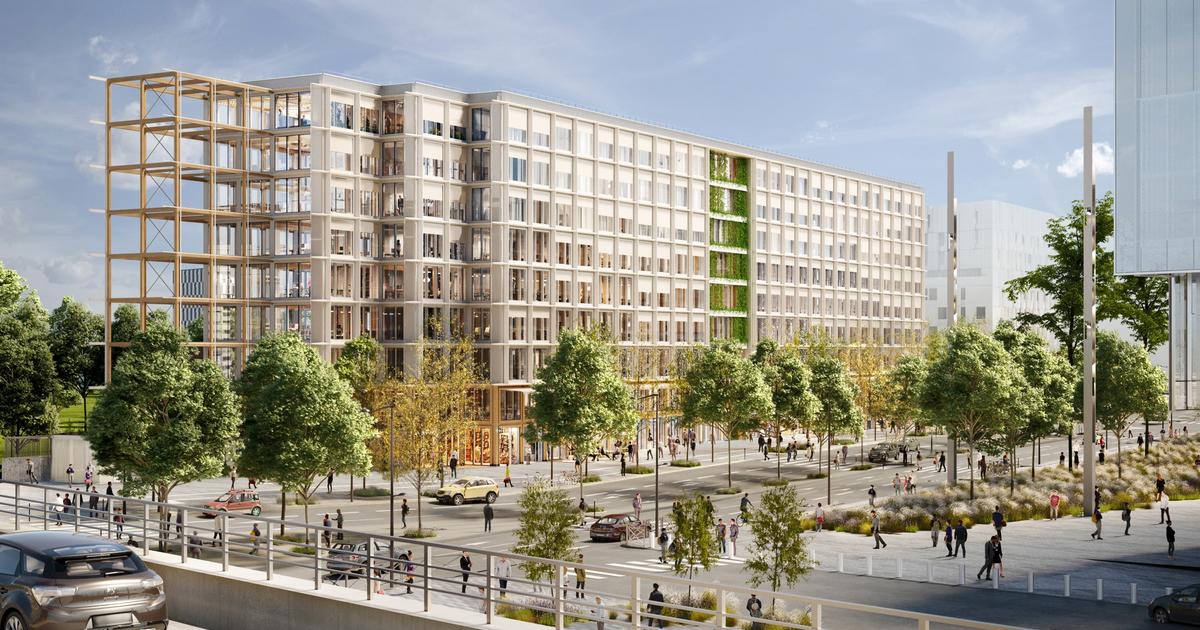It's called Stream Building.
This building, located opposite the judicial city of Paris, will be inaugurated in February 2023. Its particularity?
This project, winner of the Réinventer Paris 2016 competition, combines work, catering, cultural activities, accommodation, while respecting the environment.
The Stream Building, with a surface area of 16,000 m², consists of a wooden structure, a rarity in the capital, especially for large-scale constructions.
Behind its design lies PVA-Stream, an architectural research and creation agency founded by Philippe Chiambaretta.
Mobilize new materials
“The carbon footprint of wood compared to concrete is remarkable,” explains Philippe Chiambaretta, who studied at the École des ponts et chaussées in Paris and MIT in Boston, and graduated from the École nationale supérieure d'architecture de Paris-Belleville.
But faced with its success, new questions arise.
How to source in a reasoned way, if a significant part of the building sector focuses on this material?
How to preserve sustainable sectors?»
Hence the need to explore other avenues.
Diébédo Francis Kéré, Pritzker Prize 2022, is, for example, a follower of the land, which he used from 2001 to build a school in his village in Burkina Faso.
The dirt still uncommon in France is a serious track.
Last summer, the first mud brick of the
Arena of the Colisée-Grand-Paris, in Tremblay-en-France, was thus installed.
Delivered in 2024, this room, which will host cultural and sporting events, will have 30,000 raw earth blocks arranged on 800 m² of interior facades in addition to a wooden frame, hemp and wood wool insulation, seats made from recycled materials.
An approach to reduce the total carbon footprint of the project by 550 tonnes of CO2.
But where does this land come from?
Excavations from Greater Paris construction sites – ie 4 to 500 million tonnes of rubble by 2030. Scrap that in the past would have been sent to landfills.
will have 30,000 raw earth blocks arranged on 800 m² of interior facades in addition to a wooden frame, hemp and wood wool insulation, seats made of recycled materials.
An approach to reduce the total carbon footprint of the project by 550 tonnes of CO2.
But where does this land come from?
Excavations from Greater Paris construction sites – ie 4 to 500 million tonnes of rubble by 2030. Scrap that in the past would have been sent to landfills.
will have 30,000 raw earth blocks arranged on 800 m² of interior facades in addition to a wooden frame, hemp and wood wool insulation, seats made of recycled materials.
An approach to reduce the total carbon footprint of the project by 550 tonnes of CO2.
But where does this land come from?
Excavations from Greater Paris construction sites – ie 4 to 500 million tonnes of rubble by 2030. Scrap that in the past would have been sent to landfills.
where does this earth come from?
Excavations from Greater Paris construction sites – ie 4 to 500 million tonnes of rubble by 2030. Scrap that in the past would have been sent to landfills.
where does this earth come from?
Excavations from Greater Paris construction sites – ie 4 to 500 million tonnes of rubble by 2030. Scrap that in the past would have been sent to landfills.
Read alsoSpecialist in “augmented landscapes”, Bas Smets reinvents nature in the city
Redefining the relationship to use
Today, there is no longer any question of getting rid of it.
They are upgraded by Cycle Terre, in Sevran, near Paris.
This waste is particularly numerous in the context of rehabilitations: the improvement of the existing building being, for some - like the duo of architects Anne Lacaton and Jean-Philippe Vassal, Pritzker Prize 2021 or Patrick Bouchain - the only solution to make more responsible a sector that would represent 38% of total global energy-related CO2 emissions.
Another imperative for architects: promote biodiversity, especially in cities.
On the roof of the Stream Building, there is a 12,000 m² vegetable garden which will supply herbs, vegetables and flowers to a grocery store and the site restaurants.
The south facade hosts hops, which will provide thermal protection
Ultra-local stream beer
, marketed where it was produced.
“Construction is only one of the layers of an environment that includes other uses, particularly related to mobility, explains Phlippe Chiambaretta.
For example, if you create offices away from public transport, you encourage car use.
Whereas if they are close to metros, trains, buses, if you do not provide parking for cars, but install bicycle parking lots, you are promoting travel for people who respect the planet.
The architect of tomorrow must think like a doctor who, to make his diagnosis, is not content to observe a small part of the body but examines the patient globally.”

